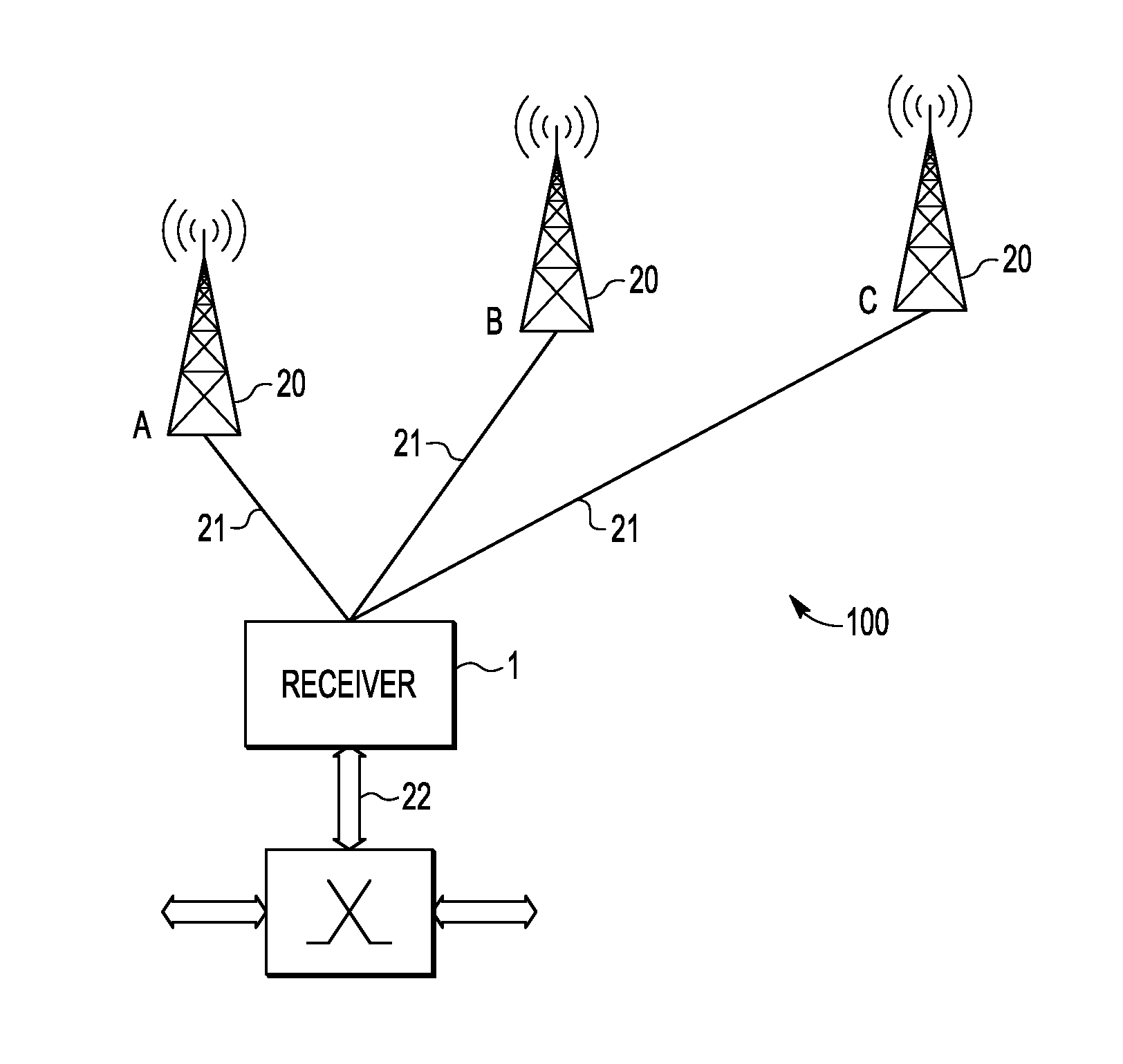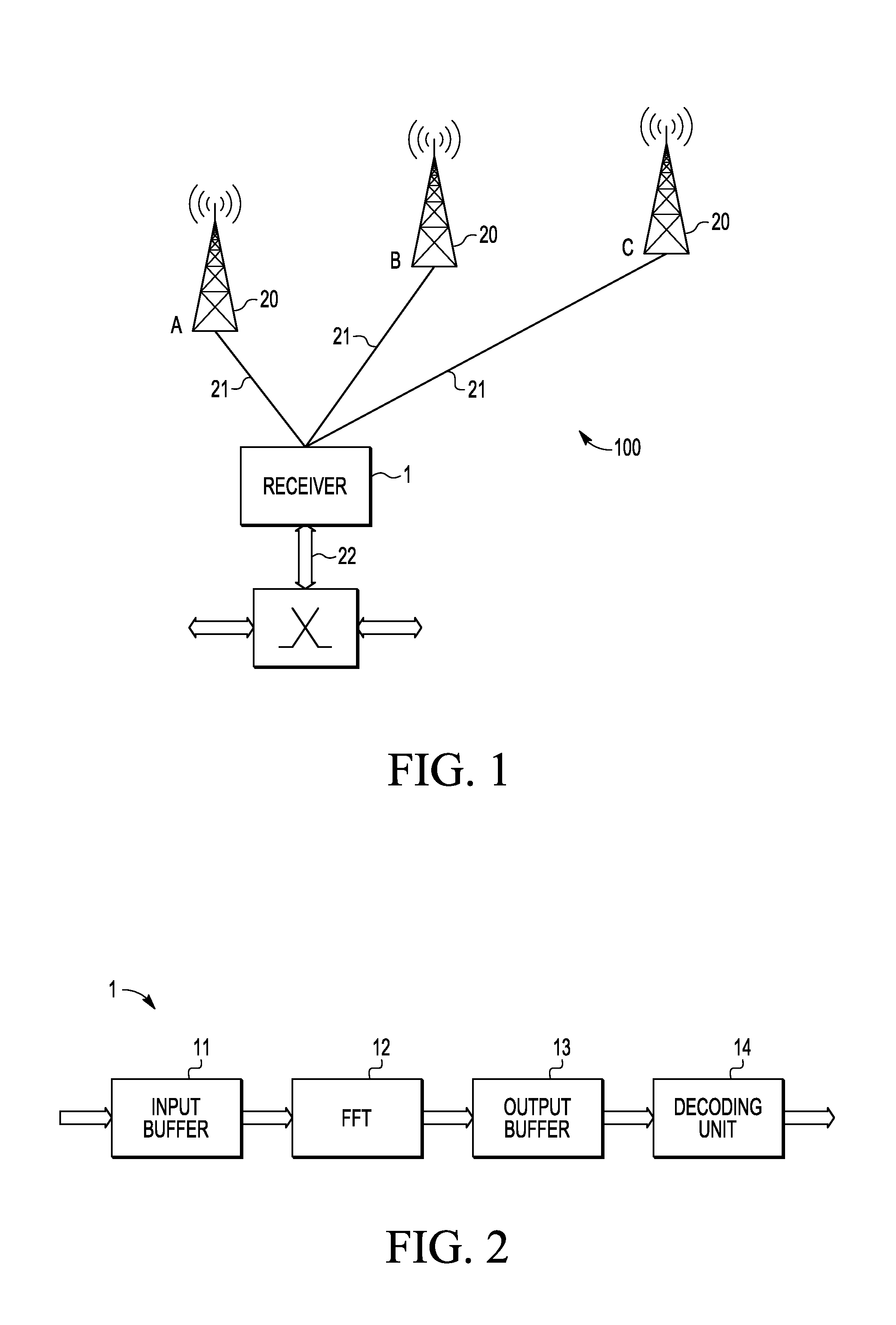Antenna delay buffering in telecommunication receivers
a delay buffering and telecommunications receiver technology, applied in the field of telecommunication receivers, can solve the problems of different delay times, signal delay times corresponding with those distances will also not be the same, and require a large amount of memory
- Summary
- Abstract
- Description
- Claims
- Application Information
AI Technical Summary
Benefits of technology
Problems solved by technology
Method used
Image
Examples
Embodiment Construction
[0015]In the following, for sake of understanding, the circuitry is described in operation. However, it will be apparent that the respective elements are arranged to perform the functions being described as performed by them.
[0016]An example of a part of a telecommunication network is schematically illustrated in FIG. 1. The network 100 is shown to comprise a telecommunication receiver 1 and a plurality of antennas 20. In the example shown, the antennas 20 are coupled to the receiver 1 by fibre optic cables 21, although in other embodiments, wireless links or conventional copper cables can be used, for example copper cables using DSL (Digital Subscriber Line) techniques. For the sake of clarity, only three antennas 20 are shown, but in practice the number of antennas may be greater than three, but may also be equal to two. The receiver 1 and the antennas 20 may together constitute a cell (or macro cell) of a mobile telecommunication network, such as an LTE (Long Term Evolution) netw...
PUM
 Login to View More
Login to View More Abstract
Description
Claims
Application Information
 Login to View More
Login to View More - R&D
- Intellectual Property
- Life Sciences
- Materials
- Tech Scout
- Unparalleled Data Quality
- Higher Quality Content
- 60% Fewer Hallucinations
Browse by: Latest US Patents, China's latest patents, Technical Efficacy Thesaurus, Application Domain, Technology Topic, Popular Technical Reports.
© 2025 PatSnap. All rights reserved.Legal|Privacy policy|Modern Slavery Act Transparency Statement|Sitemap|About US| Contact US: help@patsnap.com



